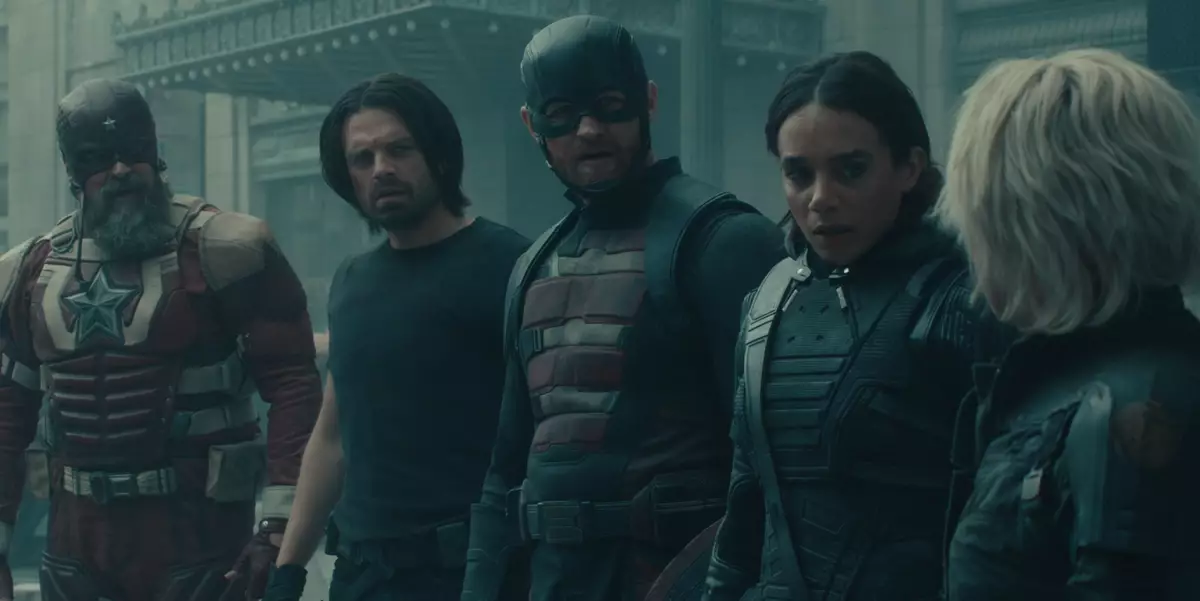Marvel’s “Thunderbolts” offers viewers a refreshing departure from the familiar dynamics of superhero films we have come to expect. Instead of reuniting iconic heroes like Iron Man or Captain America, the spotlight shifts to a group that has traditionally filled the role of the villains. This diverse assembly of reformed characters provides a unique lens to examine morality, redemption, and the complexities of human nature. By leaning into the flaws of its characters rather than casting them as purely heroic, “Thunderbolts” invites audiences to grapple with the discomfort and allure of antiheroes.
Unlikely Heroes with Complex Backgrounds
Florence Pugh’s portrayal of Yelena Belova serves as a striking anchor for the film, seamlessly blending emotional depth with sly humor. The audience may initially view her as a formidable assassin, but as the story unfolds, it becomes clear that her journey is marked by vulnerability and struggle. Accompanied by a stellar cast, including Sebastian Stan and David Harbour, the film dives into each character’s troubled past, creating a tapestry of intertwined narratives steeped in complexity. Stan’s Bucky Barnes, along with the erratic U.S. Agent played by Wyatt Russell, illustrates the gray areas between good and evil, challenging the audience to reconsider what constitutes a hero.
Thematic Depth and Emotional Resonance
Director Jake Schreier’s approach to “Thunderbolts” provides a refreshing element of indie sensibility amidst the grandeur of superhero films. Pugh describes it as “quite badass,” which resonates throughout the narrative. The film integrates thrilling action sequences with moments of introspection and humor, making it feel intimate and grounded, a departure from the often bombastic nature of other Marvel offerings. Balancing explosive action with character-driven storytelling allows for emotional resonance that elevates the film beyond a mere spectacle.
Intrigue and Ambiguous Motives
The enigmatic Valentina Allegra de Fontaine, portrayed by Julia Louis-Dreyfus, adds an additional layer of intrigue to the film. As the CIA director orchestrating the dangerous mission for this band of misfits, her ambiguous motives leave viewers questioning her allegiance and goals. This uncertainty enhances the stakes for the characters, as they grapple not only with external threats but their internal conflicts as well. The film expertly maintains an air of mystery, prompting the audience to remain engaged and invested in each plot twist.
A New Era of Marvel Storytelling
With “Thunderbolts,” Marvel signals a willingness to explore untapped narratives, moving away from the classic hero-villain dichotomy. As the concluding piece of Phase Five, it marks a pivotal moment in the Marvel Cinematic Universe, hinting at a more nuanced approach to storytelling in the future. By inviting viewers to connect with characters who embody both heroism and villainy, the film is poised to redefine what audiences should expect from superhero cinema. In doing so, “Thunderbolts” carves out its own unique identity, setting the stage for compelling stories that go beyond action-packed blockbusters and engage with the hearts and minds of their viewers.

